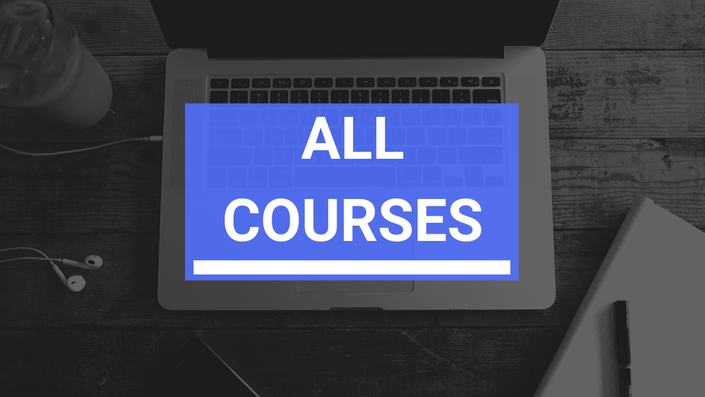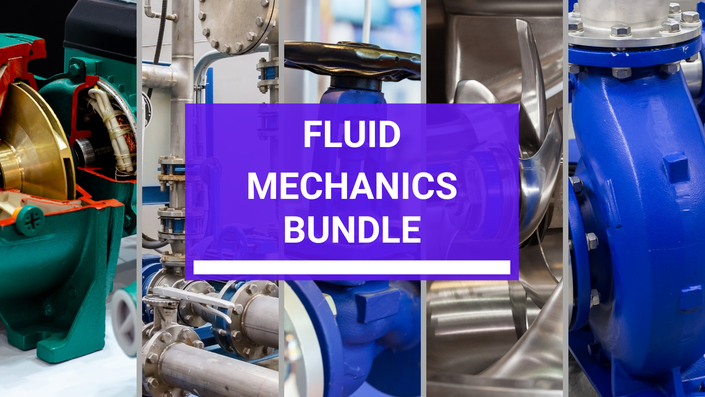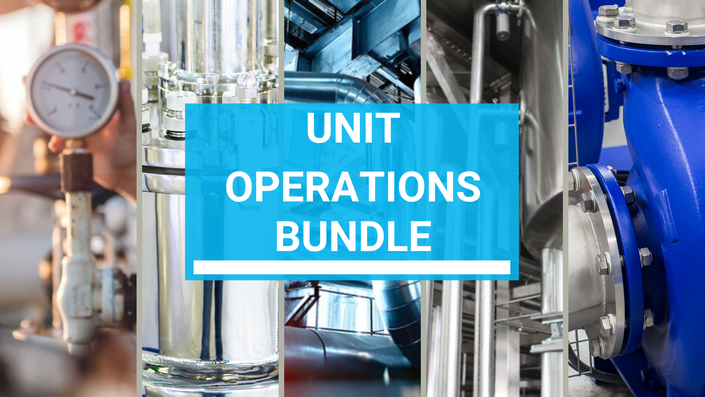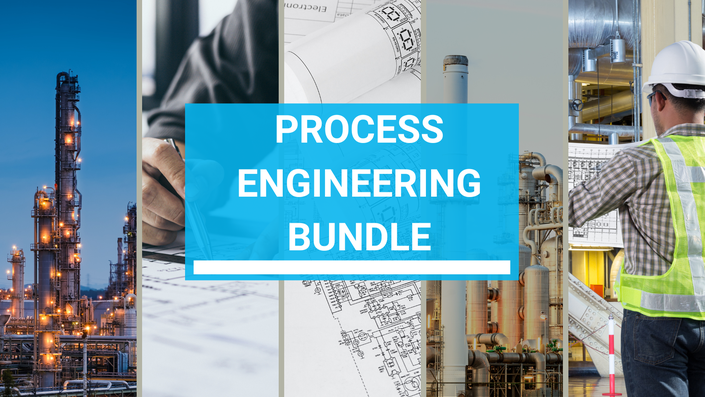Course Trailer
About this Course
📚 This Flow of Liquids Through Pipes, Fittings & Valves: Friction Loss & Efficiency Analysis course focuses on understanding the flow of liquids in piping systems, with particular emphasis on calculating friction losses and optimizing the efficiency of flow through pipes, fittings, and valves. You will learn to apply key principles to enhance fluid transport in engineering systems, helping to reduce energy consumption, improve system design, and solve real-world industrial challenges.
Key topics covered include:
- Basic Fluid Flow Principles
- Friction Losses in Pipes and Fittings
- Darcy-Weisbach Equation and Hazen-Williams Equation
- Effect of Pipe Materials, Diameter, and Length on Friction
- Losses in Fittings, Valves, and Other Components
- Optimization of Flow Efficiency in Piping Systems
👨🏫 Designed for
Chemical engineers, process engineers, mechanical engineers, and students looking to master the calculation of friction loss and flow optimization in piping systems for a wide range of industrial applications.
📚 Course Approach
This course blends theoretical lessons with practical, real-world problem-solving. You will explore the core equations for friction loss calculation and apply them to both simple and complex piping systems, with an emphasis on real-world case studies to reinforce your understanding.
🎯 By the end of the course, you will be able to:
- Calculate friction losses in pipes, fittings, and valves using appropriate equations
- Optimize the design of piping systems to minimize energy losses
- Understand the impact of various system components (e.g., pipe materials, diameter, length) on flow efficiency
- Identify and solve issues related to flow efficiency in complex systems
- Apply your knowledge to improve real-world piping designs in industrial applications
🚀 Recommended for
Students and professionals in chemical, mechanical, and process engineering who want to understand the principles of liquid flow in pipes, fittings, and valves, and optimize system efficiency through friction loss calculations.
✅ You’ll learn to:
- Use the Darcy-Weisbach and Hazen-Williams equations to calculate friction losses
- Understand how pipe materials, diameter, and length affect flow behavior
- Analyze and optimize flow through fittings, valves, and other components
- Design efficient piping systems with minimal friction loss
- Apply best practices for improving flow efficiency in complex industrial systems

Self-Paced, Dynamic Lectures
Learn at your own pace, anytime and anywhere.
The lectures are concise, engaging, and focused—designed to maximize your understanding efficiently.
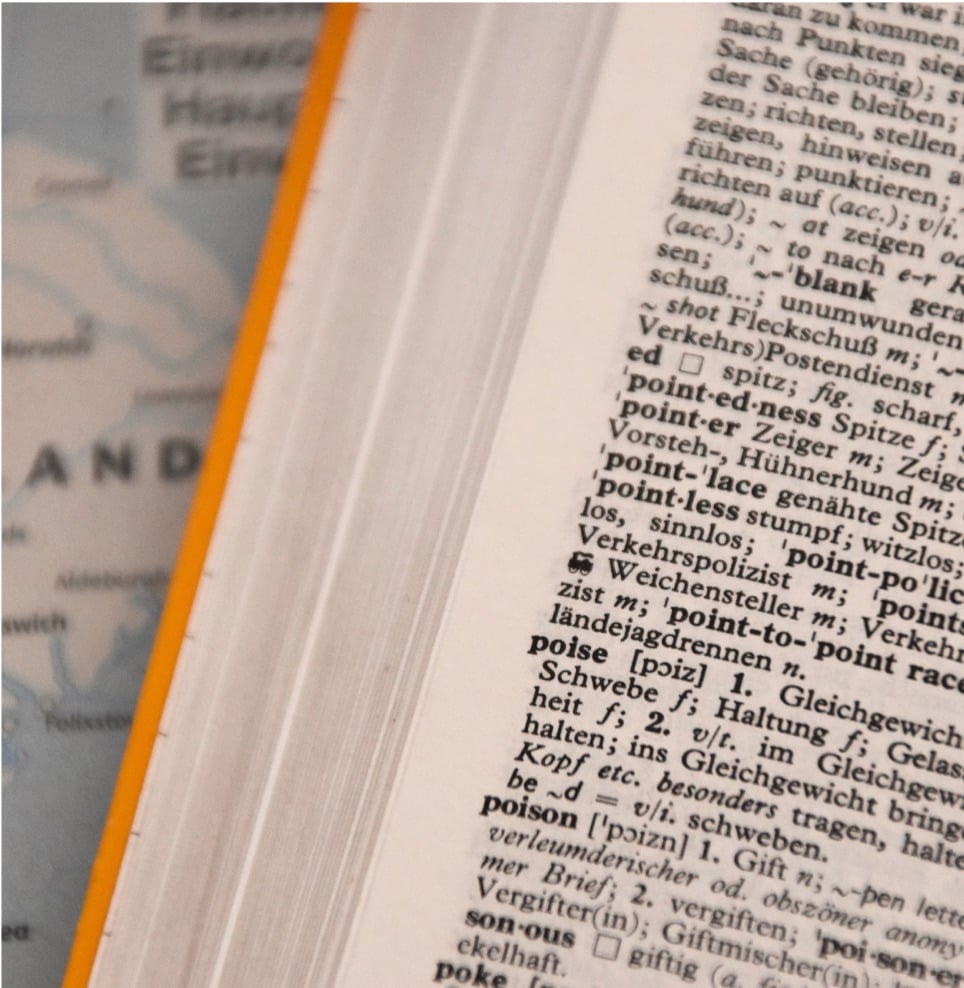
Downloadable Material
Get access to all simulation files, workshop materials, spreadsheets, reference guides and companion E-Book.
Use them to practice offline, follow along with lessons, or revisit concepts anytime.

Evaluations, Quizzes
Evaluate your progress through interactive quizzes and self-assessments.
Reinforce key concepts, identify gaps, and ensure you're ready to apply what you've learned in real scenarios.

30 Day Money-Back Warranty
Enroll with confidence—if the course doesn’t meet your expectations, you can request a full refund within 30 days.
No questions asked.

Certificate of Completion
Receive an official certificate or diploma once you finish the course—perfect for showcasing your new skills on your resume, LinkedIn, or job applications.

Instructor Support
Get guidance whenever you need it—ask questions, request feedback, and interact directly with the instructor throughout the course.
Curriculum
- Welcome/Trailer (3:13)
- Before you Start - Course Overview (3:43)
- Fluid Mechanics Series - Course Structure
- About this Course (4:21)
- Introduction to Piping Systems. Why We Need Piping systems? (8:16)
- Reference Material & Downloads
- NOTES: Updated Course (4:09)
- Basic Review of Topics + Mechanical Energy Equation Review (71:41)
- All About Pipes (0:55)
- Pipes, Piping, Pipeline, Piping Systems (3:54)
- Pipe Selection Criteria (3:09)
- Piping Materials & Piping Standards (ASTM, API, B88, etc...) (3:45)
- Pipe Sizing (ASME, BWG and Others) (11:38)
- Context of Material Roughnes (5:27)
- Common Piping Problems & Troubleshooting (7:12)
- Closure of Pipes (0:33)
- Evaluation 1 (0:13)
- Introduction to Fittings & Valves! (1:01)
- Common Accesories Found in Piping Systems: Fittings & Valves (2:59)
- Accesories that Won't Affect Fluid Flow: Pipe Hangers, Base, Shoes, etc. (6:29)
- Fittings that Affect Fluid Flow: Expanders, Contractors, Elbows, Reducers, etc. (6:54)
- What Are Valves? Why We Need Them in the Industry? (1:31)
- Common Industrial Valves: Ball, Globe, Gate, Butterfly, Check, Safety Valves & More! (5:42)
- More on Valves? Check out this Course! (0:19)
- Problems & Troubleshooting of Fittings & Valves (4:11)
- Section Closure - Fittings & Valves (0:20)
- Evaluation 2
- Introduction to Fluid Flow in Pipes (1:06)
- Reynolds Number and Types of Flow (5:20)
- Types of Flow: Laminar, Transient & Turbulent (10:51)
- Turbulent Flow (Theory + Exercise) (3:53)
- Special Case: Plug Flow (1:00)
- Relative Roughness - What is it? (7:44)
- Non-Cylindrical Pipes: Hydraulic Radius and Equivalent Diameter (6:25)
- Exercises: Non-Cylindrical Pipes: Hydraulic Radius and Equivalent Diameter (9:34)
- Closure of Fluid Flow in Pipes (0:22)
- Evaluation 3
- Introduction to Friction Loss in Pipes (Hfs) (1:00)
- What Is Friction? How Is It Related to Head Loss? (7:52)
- Introduction to the Friction Factor - (Darcy's and Fanning Models in Laminar and Turbulent Flow) (14:41)
- How to Read Moody's Chart for Friction Factor - Theory and Exercise (13:30)
- Friction Factor Equations: Chen, Swamee Jain, Hazen Williams & More! (12:07)
- NOTE: Energy Loss vs Friction Factor (1:09)
- Energy Loss due to Pipe Wall Friction - Theory and Exercises (25:20)
- Closure to Friction Loss in Pipes (0:34)
- Evaluation 4
- Introduction to Friction Loss due to Fittings & Valves (Hff) (0:22)
- Friction Loss in Fittings & Valves - Theory & Exercises (14:01)
- K Constant for Fittings & Valves - Theory & Exercises (9:40)
- NOTE: Why relating to Equivalent Lenght is Important (1:47)
- How to Relate Friction due to Fittings to Pipe Wall (Hfs and Hff) + Exercise (8:34)
- Putting it All Together: Friction Loss due to Pipe Walls, Fittings and Valves (12:51)
- Closure of Friction Loss due to Fittings & Valves (0:36)
- Evaluation 5
- Introduction to Friciton Loss in Piping Systems (0:29)
- Basics & Reynolds Number
- Ex. 043 Relationship Between Volumetric Flow Rate, Area and Velocity (Basic Engineering) (1:32)
- Ex. 045 Continuity Equation Application (Basic Eng) (3:47)
- Ex. 046 Relating Velocity and Volumetric Flow to Get the Pipes Diameter (Basic Engineering) (2:04)
- Ex. 047 Continuity Equation Applied to a Pipe Reduction (3:42)
- Ex. 049 Interesting Pressure Drop in an Expanded Pipe (Bernoulli) (5:25)
- Ex. 052 Relating Pressure Drop With Velocities (Bernoulli) (4:39)
- Ex. 053 Pressure Drops Due to Velocity Changes (Bernoulli) (4:14)
- Ex. 020 Reynolds Number and Pressure Drop in a Non-Cylindrical Pipe (4:39)
- Ex. 061 Identifying Type of Flow: Laminar or Turbulent Flow (5:14)
- Ex. 063 Minimum Pipe Diameter Given Different Operation Fluids (Reynolds Number) (7:39)
- Ex. 065 Transient State Flow in a Pipe (Reynolds Number) (3:34)
- Friction Loss in Pipes
- Ex. 068 Friction Loss in a Long Pipe (Friction Loss Type I) (7:25)
- Ex. 073 Using Chen's Equation for Friction Factor (Friction Factor Equations) (6:44)
- Ex. 075 Hazen Williams Equation (Friction Factor Equations & Friction Loss) (4:52)
- Friction Loss in Fittings & Valves
- Ex. 059 Calculating K Value With Experimental Data (Friction Due to Valves) (7:50)
- Ex. 087 Friction Loss Due to a Pipe Connected to a Vessel (Friction Loss in Fittings) (3:24)
- Ex. 089 Friction Loss Due to Gradual Expansion of 60º (Friction Loss due to Fittings) (2:25)
- Ex. 091 Friction Loss in a Sudden Contraction (Friction Loss in Fittings) (2:31)
- Ex. 093 Pipe Entrace Edge Effect on Friction Loss (Friction Factor in Fittings) (4:24)
- Ex. 097 Pressure Drop Due to a Street Elbow (Friction Loss in Fittings) (2:41)
- Closure to Friction Loss in Piping Systems (0:30)
- Bonus Section - Solved Problems (0:18)
- Ex. 062 Maximum Volumetric Flow Given a Pipeline Diameter (Laminar Flow) (3:08)
- Ex. 064 Reynolds Number in a Pipe (Type of Flow Transient or Turbulent) (2:59)
- Ex. 066 Importance of Wall Thickness in a Pipe (Reynolds Number) (9:48)
- Ex. 021 Reynolds Number Exercises + Hydraulic Radius (4:06)
- Ex. 077 Flow in Ducts vs Parallel Pipes (Geometry + Rh) In a Pipe (Reynolds Number) (4:27)
- Ex. 078 Reynolds Number of a Non-cylindrical Pipe (Hydraulic Radius and Equivalent Diameter) (10:18)
- Ex. 079 Reynolds Number of a Heat Exchanger (Reynolds Number) (6:37)
- Ex. 022 Pressure Drop Due to Wall Friction in a Non-Cyindrical Pipe (Hydraulic Radius) (6:32)
- Ex. 057 Friction Loss Due to Wall Friction (Wall Friction) (3:51)
- Ex. 067 Pressure Changes When Drilling Petroleum (Friction Factor + Type I) (13:08)
- Ex. 069 Finding the Real Material Roughness of a Pipe (Type I + Friction Wall) (11:29)
- Ex. 074 Janine Swamee Equation Example (Friction Factor Equations) (4:05)
- Ex. 076 Hazen William Equation for SI System (Friction Loss & Friction Factor Equations) (4:24)
- Ex. 080 Flow Through an Open Channel (Equivalent Diamater, Deq + Hydraulic Radius) (7:58)
- Ex. 081 Drop of Pressure in a Heat Exchanger (Hydraulic Radius, Reynolds Number, Friction Loss) (6:42)
- Ex. 082 Hydraulic Radius and Equivalent Diameter of a Half-Pipe (Hydraulic Radius, Equivalent Diameter; Rh Deq) (4:00)
- Ex. 083 Equivalent Diameter of an Open Channel (Deq + Rh) (4:22)
- Ex. 084 Complex Channel Flow (Rh + Deq) (6:14)
- Ex. 088 Friction Loss Due to Gradual Expansion (Friction Loss due to Fittings) (2:39)
- Ex. 090 Friction Loss Due to Pipe Exit (Friction Loss due to Fittings) (2:44)
- Ex. 092 Drop of Pressure in a Sudden Contraction (Friction Loss due to Fittings) (6:52)
- Ex. 094 Equivalent Length of a Gate Valve (Friction Factor in Valves) (4:38)
- Ex. 095 Equivalent Length of a Globe Valve (Friction Factor in Valves) (3:27)
- Ex. 096 Pressure Drop Due to an Elbow (Friction Loss due to Fittings) (5:30)
- Ex. 098 Elbow Pressure Drop Comparison (Friction Factor due to Fittings) (3:24)
- Ex. 099 Empirical Rules for Pressure Drops in Valves (Friction Loss due to Fittings) (3:17)
Course Enrollment
This and all other courses are available only via the All Courses - One Subscription Membership.

Hi, I’m Emmanuel Ortega,
a.k.a. the Chemical Engineering Guy!
With five years in the chemical industry, from petrochemical plant design to polyester textiles, I bring real-world experience to show the true value of engineering knowledge.
My Expertise:
- Process Simulation & Optimization
- Chemical Process Design
- Process Equipment Design
- Automotive & Industrial Polyester Yarn Technologies
- Online Tutoring, Online Education Management
The Courses I design are entirely dynamic. You will see theory and then apply it ASAP to a real life problem! I even use the books you are using right now in your engineering courses...
I'll see you in class!
Frequently Asked Questions (FAQ)
- When does the course start and finish?
- The course starts now and never ends! It is a completely self-paced online course - you decide when you start and when you finish.
- How long do I have access to the course?
- *How does lifetime access sound? After enrolling, you have unlimited access to this course for as long as you like - across any and all devices you own.
- NOTE*: This is true as long as you keep your subscription active.
- What if I am unhappy with the course?
- We would never want you to be unhappy! If you are unsatisfied with your purchase, contact us in the first 30 days and we will give you a full refund.
- Will I Get a Certificate/Diploma of Completion?
- Yes! After the course, you will get a Certificate of Completion with a Diploma! You can use this in your Resume!
- Are Resources Downloadable?
- Absolutely YES! Every resource is available for download, allowing you to study alongside them.
- Any doubt? Message me!
- Please reach out! [email protected]

